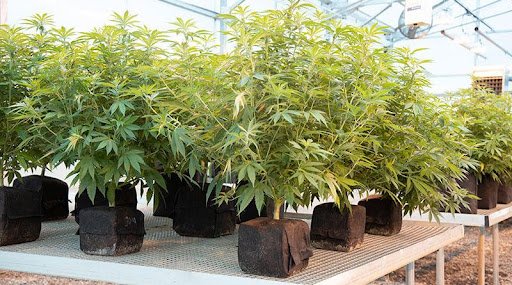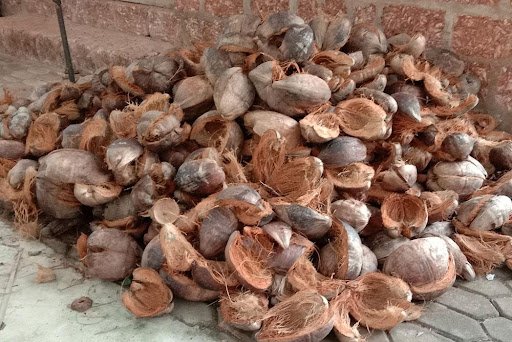Coco Coir: Growing Cannabis in a Sustainable Substrate
Arguably, cannabis has been a historically sustainable endeavor. The plants can literally be grown in just about any geographic region, hence its nickname, "weed." Cannabis sativa L. takes in sun, water, and nutrients, and passes them back to us in the form of hemp-made rope, textiles, medicines, and oxygen.
Although strict government regulations have played a part in turning this green industry brown, many cannabis operations know that they need to reduce their carbon footprint to remain accountable ecologically and socially. And this means using less electricity, water, nutrients, and generating less waste where possible.
The Next Step in Sustainable Growing Mediums
Cannabis cultivators have many options when it comes to which type of substrate to use for their crops. Traditional growers may prefer a soil medium, while those operating in a controlled agriculture environment may choose to leverage hydroponics.
One form of hydroponic farming includes the use of a soilless substrate that can hold and distribute nutrient solutions to the cannabis plant’s roots. A popular type of hydroponic substrate is known as coco (coconut) coir.
Coco coir is not a new technology. In fact, it has been used by Asian countries such as Sri Lanka, India, and Vietnam to make twine and rope (much like hemp). Up until the 1980s, Western countries generally considered coir pith a waste product. Thankfully, agricultural scientists have developed methods to transform coconut coir into a highly efficient substrate for growing crops such as cannabis.
Three Reasons to Consider Coco Coir for Sustainable Cultivation
By using a coir product, such as Botanicare’s CocoPro, one can add to the sustainability of their cannabis operation.
CocoPro provides cannabis cultivators a scalable solution for hydroponic grow facilities and provides a thoughtfully designed coir solution for nearly any size cannabis farm. Photo taken at Hawthorne’s Kelowna, BC, Canada facility.
Coco coir boasts three, important characteristics that make it a great growing medium for businesses striving to be more environmentally and socially responsible. It taps into a waste stream, it reduces the use of excess water and nutrients, and the substrate is compostable.
Innovation From Agricultural Waste
Millions of coconuts are cultivated, harvested, and processed each year worldwide. Half of the coconut market share consists of coconut oil, which is used to manufacture everything from cosmetics and hair products to coconut oil and food additives. Up until the last few decades, a large amount of cocoa fibers and pith were disregarded as waste during the meat and milk extraction process.
Coconut shells can be found in large mounds in countries that grow and harvest coconuts commercially. Rather than being treated as a waste-product, the significant amount of shells and husks can be repurposed into brooms, rope, soilless substrates, and more.
Coco coir manufacturers dig into the coconut processing waste stream and leverage the physical properties of the pith and fibers to produce a horticultural substrate that supports the cannabis plant's needs. Converting coconut fibers and pith into a quality product helps divert materials from the waste stream. As a bonus, coco coir products can often be obtained at a lower cost compared to other soilless substrates.
Using Coir Reduces Water Usage
The predominant components of the coconut shell are the pith and fibers. Pith retains water while the fibers provide aeration and structural integrity. Coco coir evenly distributes moisture and nutrients to the cannabis roots and will not become hydrophobic as the substrate dries. This means you can be strategic with how much water you use and reduce the amount of freshwater that becomes runoff or waste. This is a huge advantage for cultivators operating in regions where fresh water is more costly and difficult to come by. Using a growing medium that is unlikely to become hydrophobic also makes it easier for growers to nudge larger yields by means of crop steering through dry back and rehydration cycles.
Thanks to scientists looking to maximize these benefits, coir products like CocoPro further enhance the substrate’s ability to offer high aeration, nutrient disbursement, and minimal influence on chemical properties. The result is a highly efficient growing medium for growing plants without the need to water excessively.
It’s important to keep in mind that when a cultivator uses a substrate that requires less water, they also use fewer nutrients which reduces expenses. It's a "win-win-win" for growers. Using a high-quality coir substrate can result in vigorous plants and excellent yields using less inputs.
Coco Coir Is Compostable
Unlike other types of hydroponic substrates, coco coir can be composted which is a significant benefit for grow facilities that are striving to improve the sustainability of their cultivation operations. This is the third reason coco coir shows tremendous promise in sustainable cannabis; it can be safely returned to the earth in the form of mulch or soil amendment.
It's not unrealistic to envision a future where coir compost can be used to help cultivate more coconuts. Perhaps in a perfect world, cannabis cultivators could grow healthy cannabis plants using coir from coconuts grown in soil enhanced by composted coco fibers, pith, and plant roots.
Making Cannabis Sustainable, One Innovation at a Time
The potential for a sustainable, hydroponic substrate is undeniable. Scientists continue to research and discover ways to develop products that are both environmentally conscious, as well as highly efficient in growing high-yield cannabis strains. Companies like the Hawthorne Gardening Company continue to help improve horticultural technologies, while remaining mindful of a cultivator's ecological responsibilities. And with each innovation, we take a step closer to sustainable cannabis cultivation and processing practices.





